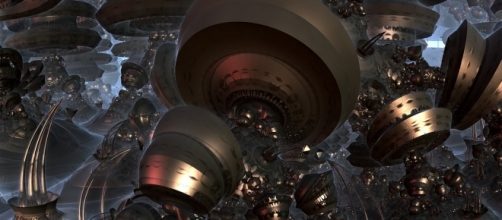Although the Trump Administration appears to be trying to stop science information from getting out of agencies such as the EPA, fortunately most science news and reports about new technological innovations comes from various independent journals including the UK’s Nature and the US-based AAAS Science magazine. They can however be a bit difficult for the layperson to understand, especially how they may affect them.
Quantum computing
The latest development in the long-running battle over whether quantum computers actually exist and, if so, are they worth the trouble, comes with the new D-Wave Systems (Burnaby, Canada) 2000Q computer which has double the number of qubits (quantum bits) of the original D-Wave computer which is being used by Martin Marietta and NASA.
The model 2000Q will cost in the range of $15 million and is intended at first to solve the complex mathematics involved in computer security and encryption systems. Those are both critical topics both for individuals and nations. Some researchers believe that quantum computers can be useful in predicting earthquakes and climate change.
If you don’t understand just what makes a quantum computer different then you are among the vast majority of people, even mathematicians and scientists. In general, it uses quantum states of subatomic particles such as their spin to produce probability assessments of problems and running the same problem over and over the building consensus is taken as a solution.
The process usually involves extremely complex processes such as entanglement which few people believed until recent experiments such as the Canary Island teleportation tests proved they exist.
That may seem a sloppy and slow way to solve problems but it is actually much faster than other methods using digital computers for some very complex problems mostly those involving optimization and, in a way, harkens back to the slightly less precise answers produced by the analogue computers which preceded the construction of the first vacuum tube digital computers during WWII (Circa.1942-3).
But finding ways to use the new quantum computers is also a complex problem as is the actual test to see if they work - there is still considerable debate as to whether D-Wave computers either work or are as fast as claimed.
Comparisons with digital computers are extremely difficult because of the different kinds of problems they are best at solving and the difficulty of producing algorithms (methods) to solve the problems on both kinds of computers.
On the other hand, Thomas Watson, president of IBM famously (or infamously) said when asked about the market for the company's computers in 1943 "I think there is a world market for maybe five computers."
Today there are computers in your pocket, in your watch, TV, radio, and in every car. Of course, Watson was talking about the hulking monsters using vacuum tube technology which is the same stage of development where quantum computers are today - also he soon changed his mind.
The skinny on 3D printing
Although some of the hype around the development of 3D computer has faded recently, Spanish researchers have announced that they can print actual living human skin on a medical 3D printer.
Using skin to cover large wounds or burns has become a standard treatment in hospitals but it can take three weeks or more to grow such skin in the laboratory. the new development was the ability to produce bilayer (dermis and epidermis) pieces of skin in the standard 100 square centimetre size in about a half hour using 3D bio-printing.
The printer builds the individual layers of skin one on top of the other by depositing plasma infused skin cells. Tests on mice in the laboratory have proven that the technique works. The Economist looked at this technology and predicted that kidneys and livers will be created in 3D printers within 5 years.

